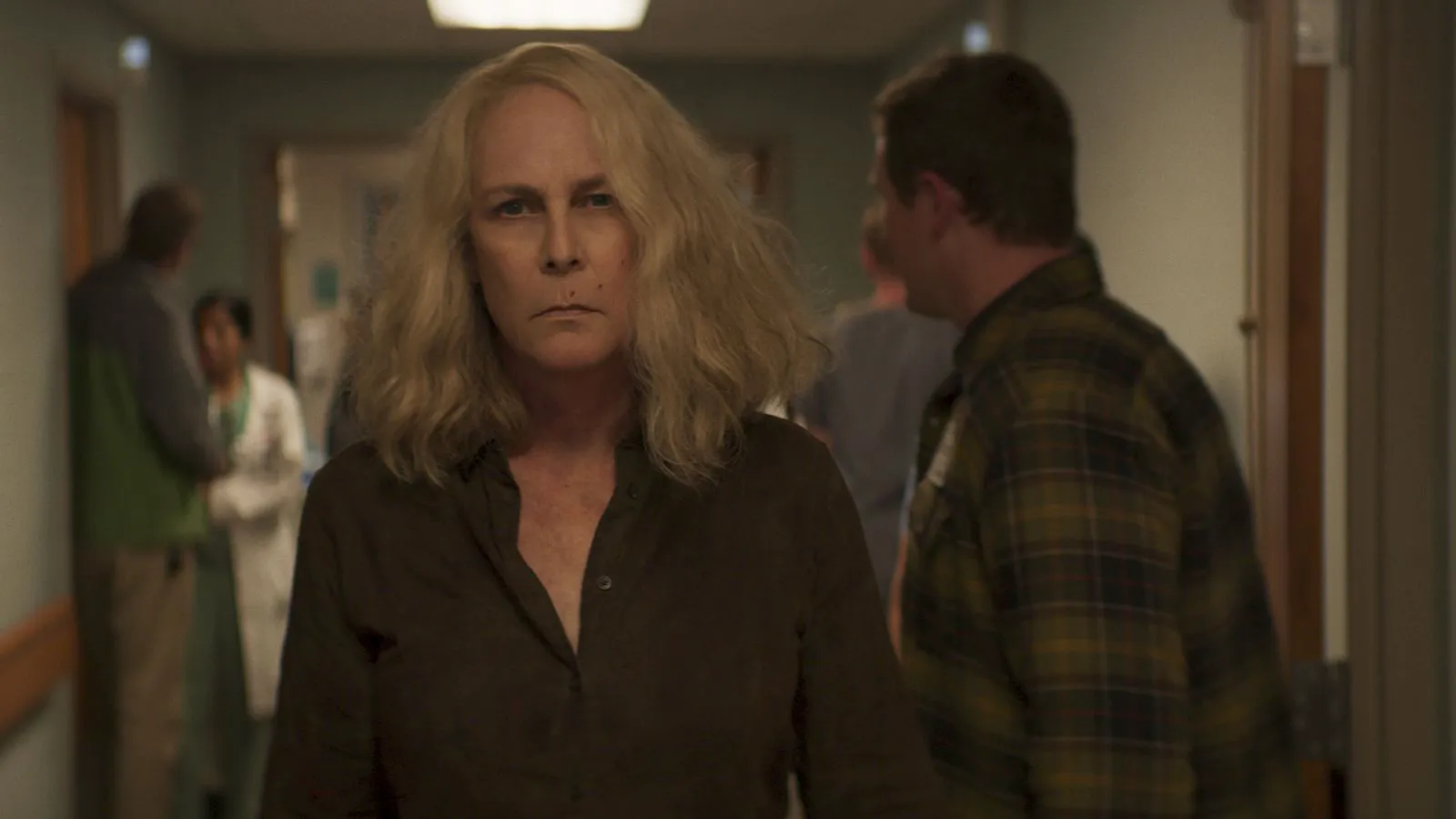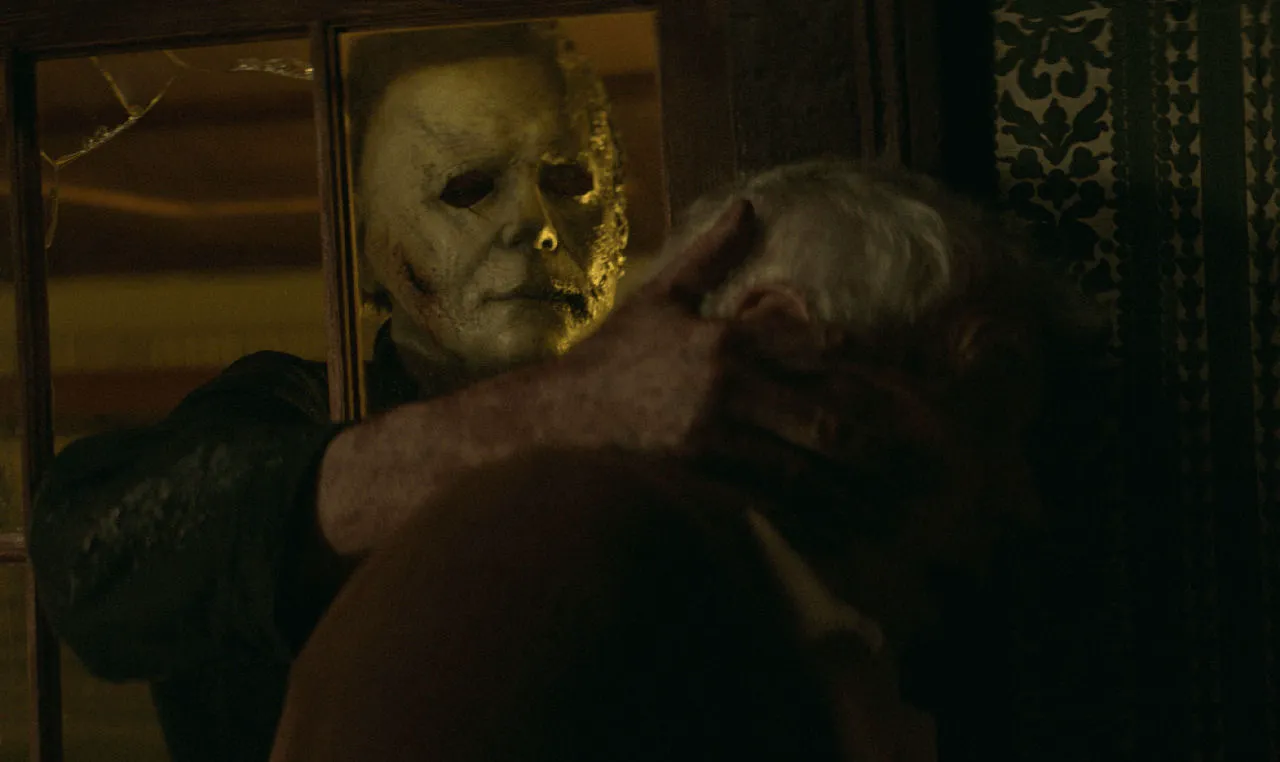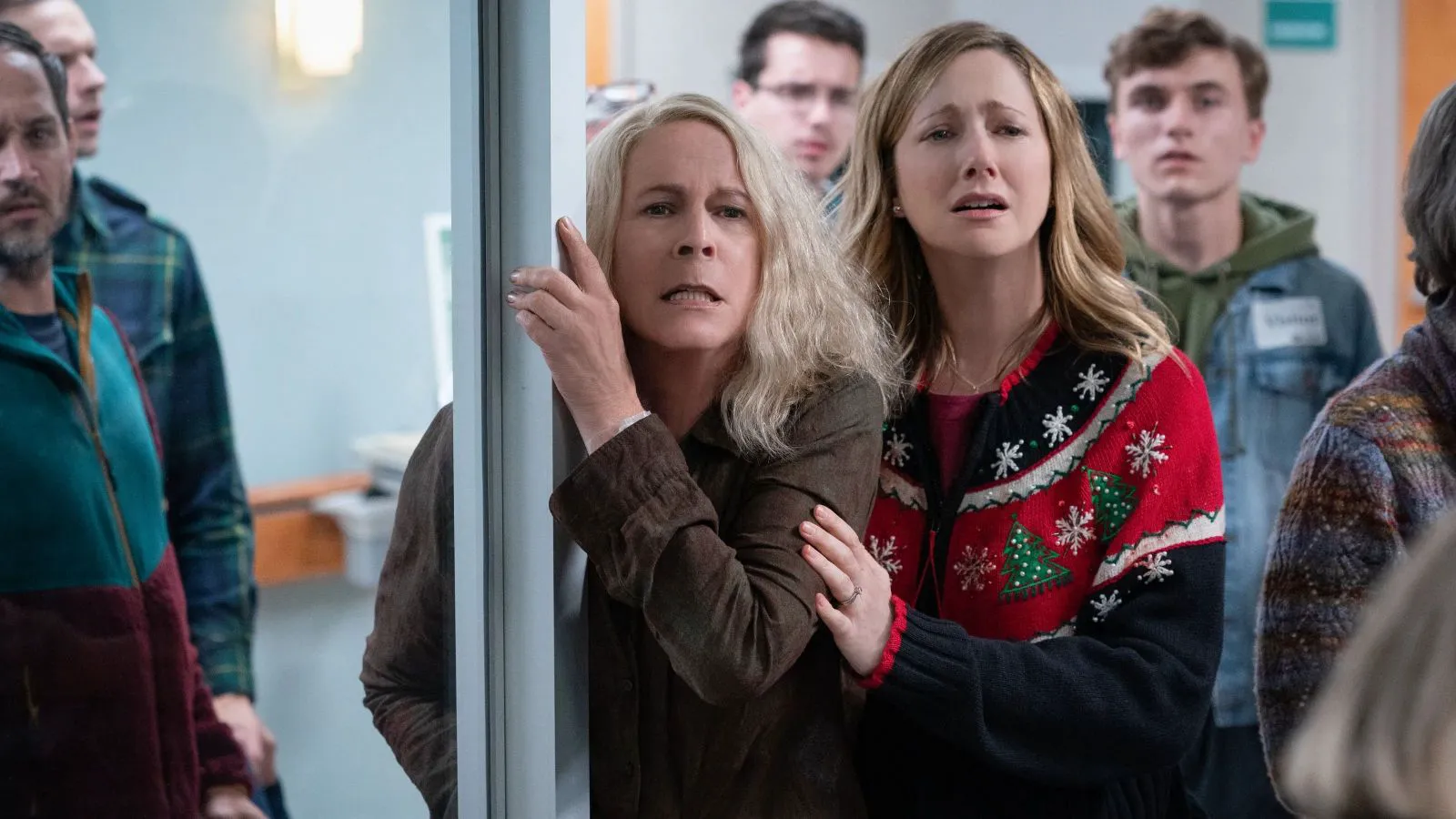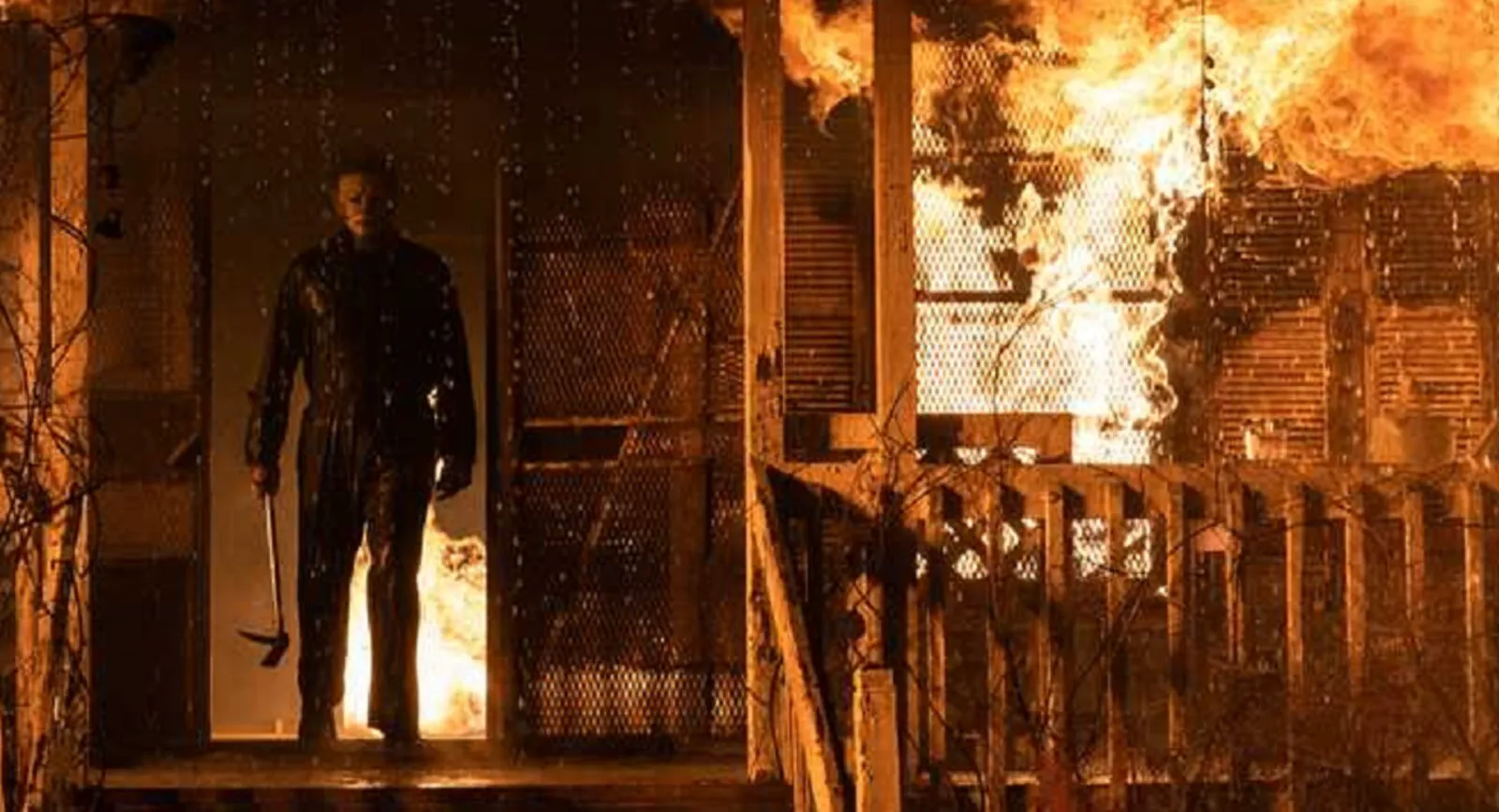Lori Strode, the ultimate “final girl” portrayed by the iconic scream queen Jamie Lee Curtis, is only a couple of films away from her co-dependent relationship with the relentless killer, Michael Myers, reaching its definitive conclusion. Out of the twelve installments in the franchise to date, with the thirteenth poised to deliver the final blow, Laurie has appeared in seven, while Michael has haunted eleven (“Halloween III: Season of the Witch” dared to tell a completely different story under the familiar banner). Michael Myers has been defeated and resurrected countless times, a macabre cycle that persisted until director David Gordon Green and writer Danny McBride, under the watchful eye of original creator John Carpenter, decided to reboot the mythology in 2018, severing the endless cycle of comebacks.

Jamie Lee Curtis as Laurie Strode in a still from “Halloween Kills”
The Night He Came Home… Again
The 2018 “Halloween” picks up the story in Haddonfield, forty years later. Thanks to the blundering of journalists, Michael escapes from the asylum. Laurie, whose life has been a rollercoaster of PTSD-fueled paranoia, has been waiting for this moment. Armed and ready, her house fortified, it’s time for reckoning. In the bloody climax, three generations of Strode women – Laurie, her daughter Karen (Judy Greer), and granddaughter Allyson (Andi Matichak) – seemingly incinerate Michael in the basement of Laurie’s fortified home.

Nick Castle as Michael Myers in a still from “Halloween Kills”
Halloween Kills: A Town’s Trauma
“Halloween Kills” picks up directly after the fiery events, but from a different perspective. With the Strode’s backstory and family dynamics firmly established, the film shifts its focus to the other survivors of the 1978 massacre. There’s the car passenger, the children saved by babysitters like Tommy Doyle (played by Paul Rudd in “Halloween: The Curse of Michael Myers”), and the police officer whose shot went astray. These survivors have formed a support group of sorts, united by their shared trauma and a burning desire for retribution. Oh, and Michael Myers, of course, didn’t stay dead.

Jamie Lee Curtis as Laurie Strode in a still from “Halloween Kills”
Expanding the Halloween Universe
The shift in focus and the attempt to build upon the existing narrative, rather than rewrite it, makes the second part of the trilogy stand out from the first, which, frankly, felt like an unnecessary stroll down memory lane. In the context of the trilogy, it now serves as an extended prologue. “Halloween Kills” revisits the beginning, adding new details to the night of 1978 – specifically, the ill-fated duel between Officer Hawkins and the seemingly immortal psychopath. This provides the catalyst for a collective trauma that extends beyond Laurie, becoming a shared wound for the entire town, one that refuses to heal.

Nick Castle as Michael Myers in a still from “Halloween Kills”
Mob Rule and Metaphysics
Green transforms Carpenter’s motif of suburbia, with its friendly faces masking malice and hidden secrets, into a literal uprising and a thirst for blood. It’s hard to disagree: after a maniac terrorizing the same two streets for ten films, the locals were bound to get fed up. It also becomes clear that Myers, despite being mentally deranged, is far too resilient to be human. Even genre conventions struggle to justify his unwavering immortality. This is where metaphysics comes in – the vessel of evil, resurrected through the slasher trope, is elevated to a higher moral plane about the totality of fear and violence. Ultimately, with all its Old and New Testaments (reboots), “Halloween” was destined to embrace biblical dogma and become the Gospel according to Carpenter: Michael is executed by a frenzied mob, wielding not only stones but anything they can get their hands on (knives and bats), and no one doubts that Laurie Strode is, at the very least, a saintly figure.
This philosophical undertone (as much as possible in the twelfth installment of a slasher franchise) doesn’t detract from the bloodshed and Myers’ inventiveness. Heads, eyes, and limbs are torn, mutilated, and contorted. The moment a character gains a name and a scene to endear themselves to the audience, they are doomed to become Myers’ next target. The body count of his murderous spree grows with each film, but the grand finale of dismembered limbs is likely reserved for the final installment, “Halloween Ends,” due in 2023. The second part serves as a vivid and impactful bridge to the conclusion, expanding the universe with new faces (Laurie spends almost the entire runtime in a hospital bed, convinced that Myers is defeated), but it can hardly be considered a true revelation. “Halloween Kills” doesn’t reinvent the genre or the franchise, but it moves consciously and confidently across familiar ground. How to kill Michael Myers (and whether it’s even possible) will be revealed in the next chapter.